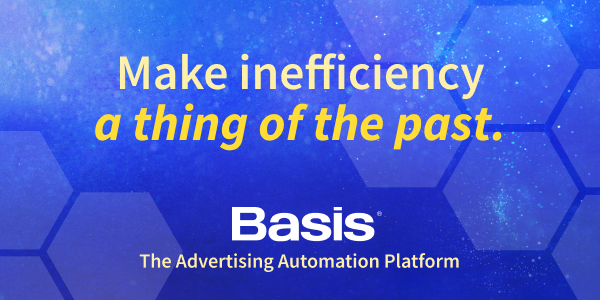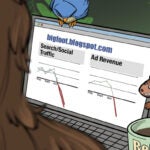Advertising agencies are hurting.
Agency leaders cite inefficient processes as the biggest challenge currently facing their organizations, ahead of all other pain points, according to a recent survey. Clunky planning workflows, scattered data sources, bloated tech stacks and siloed platforms are just a few of the symptoms.
More concerning, agencies are largely nonplussed about how to address this inefficiency. Many have gotten so used to the pain that they’re resigned to living with it. After all, if there’s no realistic or affordable cure, the best you can do is grin and bear it, right?
Ironically enough, the inefficiency problem stems from programmatic advertising that emerged as a solution to the inefficiencies introduced by the digital revolution in marketing. Programmatic connected demand and supply in powerfully automated marketplaces, redefining what media buying meant in the digital age. But it came with side effects that eventually overwhelmed the benefits – an explosion of middlemen, convoluted tech stacks, a lack of transparency and far too much waste.
The result: an ever-worsening sprawl of ad tech that makes it increasingly harder for agencies to optimize their performance. We need a cure.
AI’s off-label problem
Fittingly, the same survey showed that agencies leaders see AI and automation as their number-one investment priority – a path out of the inefficient status quo. But the survey also revealed concern that most agencies aren’t making the most of these technologies.
Today, agencies use AI predominantly as a content creation copilot, bolstering creative work. While helpful, this is not the most imaginative use case. More to the point, it does very little to address operational inefficiency. To solve their inefficiency problem, agencies need to move beyond seeing AI as just a “magic chatbot” for content creation and start treating it like a true strategic partner.
At its core, AI is designed to connect and analyze huge pools of disparate data sources, and this data analysis should be used to unveil deep insights around planning, spend, performance, and more. It can connect dots, reduce bloat across tech stacks and, even more powerfully, it can equip agencies with previously hidden insights that allow them to move their operations into greater degrees of efficiency.
With that in mind, here are the top AI use cases for agencies that will cure their inefficiency woes.
Three strategic use cases for AI and automation
1. Accelerating planning workflows
Planning a campaign shouldn’t feel like trying to diagnose a patient without access to their chart. But for most agencies, that’s exactly what it is: dozens of disconnected tools, endless spreadsheets and a painful lack of visibility into what’s working where.
AI can change that. By drawing together data from across channels – search, social, CTV, programmatic and beyond – AI-powered platforms can build a single, integrated view of your media universe. That means faster planning, fewer errors and confident decision-making.
Instead of hopping between different programs and windows and piecing together assumptions, teams can plan in one place, with better data and fewer meetings.
2. Reducing reporting friction
Reporting has quietly become one of the biggest time-sucks in agency life. Every campaign ends in a scramble to gather data from a dozen different places, normalize formats and turn it into a coherent narrative.
AI can automate this process. But, even more powerfully, it can rethink it. By connecting data sources and building dynamic reporting templates, AI-powered platforms can generate clear, real-time insights that actually mean something.
No more midnight Excel marathons. No more “We’ll get you that next week” emails. Just streamlined, always-on visibility into what’s performing – and why.
3. Eliminating tool sprawl
One of the most overlooked inefficiencies in advertising is the sheer number of systems and tools people rely on to do their jobs. When your planning tool doesn’t talk to your buying tool, which doesn’t talk to your analytics tool, which doesn’t talk to your reporting suite … well, inefficiency becomes inevitable.
AI can help unify these operations by acting as connective tissue that makes the whole system smarter. A platform that integrates across channels and automates key workflows gives teams time and clarity – while helping leaders focus on strategy, not just execution.
The cure for digital advertising’s sickness
These three strategic use cases demonstrate that AI’s potential extends far beyond its current role as a creative copilot.
The natural language facility of AI models isn’t just a way to create content; it can empower agencies to seamlessly leverage complex data sets more robustly and rapidly. AI democratizes the kind of data analysis that was once only possible with extensive (and expensive) technical expertise. And this integrated data analysis can unify and automate processes across the stack, removing the friction that currently limits performance.
But first, marketers must recognize that the operational fallout from ad tech sprawl should no longer be tolerated. AI tools are growing more practical and accessible by the day, giving agencies a path to stop the swelling and rejuvenate their stack with deeper insight, connection and efficiency.
The momentum behind AI keeps building, and it’s only a matter of time before the entire ad industry jumps on board. And as with every tech revolution before it, the early adopters of this more strategic application of AI will have more time to master these new tools and carve out a competitive head start.
















